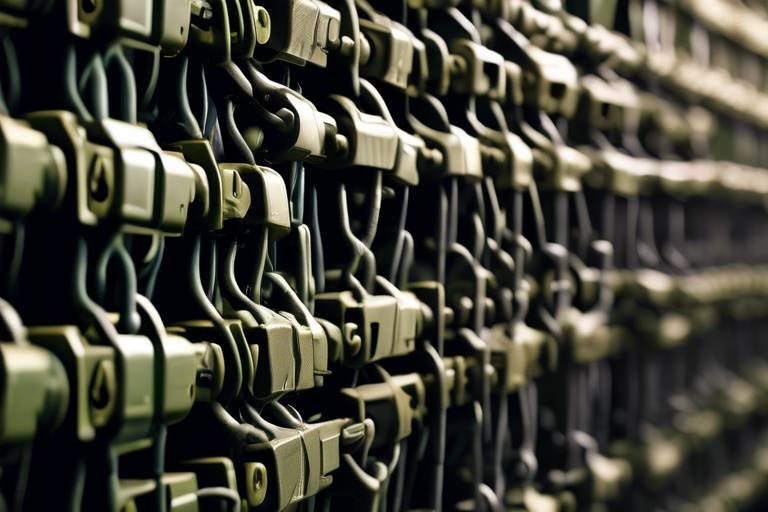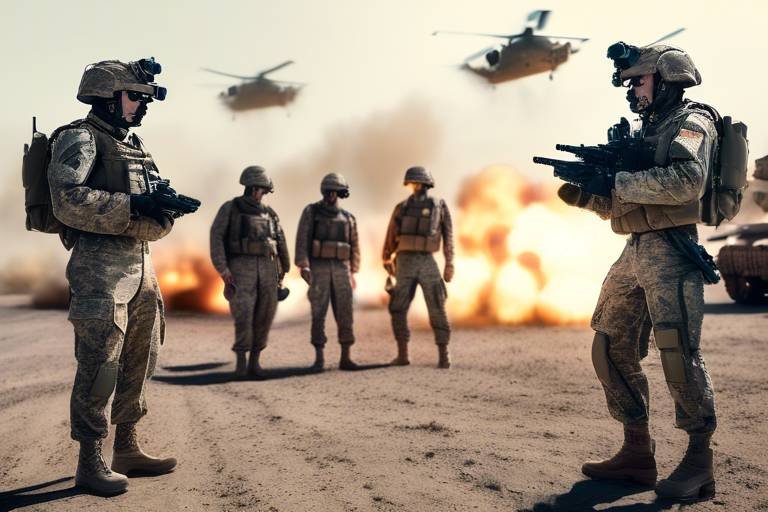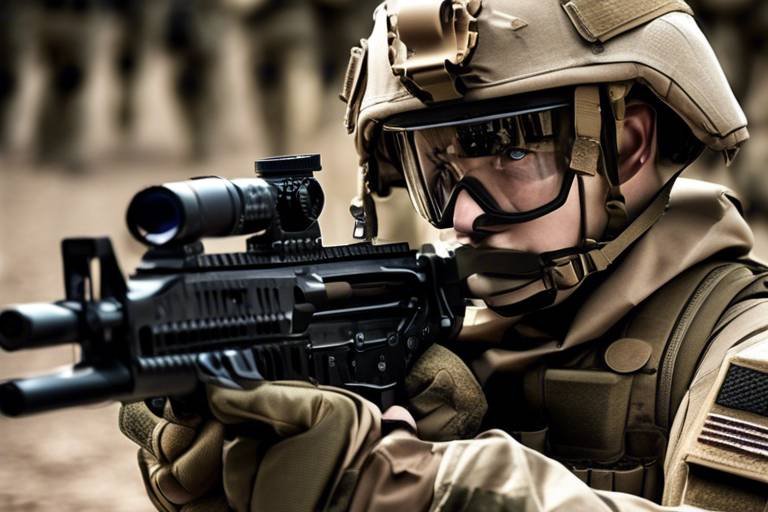Exploring the Role of AI in Military Crisis Management
In today's world, the intersection of artificial intelligence (AI) and military operations is not just a futuristic concept; it is a reality that is reshaping how armed forces manage crises. Imagine a battlefield where decisions are made not just by human intuition but are bolstered by intelligent systems that analyze data at lightning speed. This transformation is not merely about technology but about enhancing the very fabric of military strategy and operational efficiency. As we delve deeper into this topic, we will uncover how AI is revolutionizing military crisis management, leading to improved decision-making, enhanced operational capabilities, and strategic planning that adapts to the complexities of modern warfare.
The journey of AI in military contexts is rich with milestones that highlight its growing importance. From the early days of simple computational models to today's sophisticated machine learning algorithms, AI has evolved significantly. Initially, military applications of AI were limited to basic data processing tasks. However, as technology advanced, so did the reliance on AI for operational success. The development of autonomous drones, intelligent surveillance systems, and predictive analytics tools marks a significant shift. These innovations have not only improved operational effectiveness but have also changed the way military leaders approach crisis management.
When it comes to decision-making during crises, the stakes couldn't be higher. AI algorithms are stepping in to assist military leaders, enabling them to make informed choices based on comprehensive data analysis. Imagine having the ability to sift through terabytes of information in seconds, identifying patterns and trends that would take humans days or even weeks to uncover. This capability allows military personnel to act swiftly and decisively in the face of emerging threats, enhancing their situational awareness and operational readiness.
AI plays a crucial role in processing intelligence data, which is essential for maintaining situational awareness. By leveraging machine learning techniques, military organizations can now analyze vast amounts of data from various sources, including satellite imagery, social media, and reconnaissance reports. This data analysis not only improves the understanding of the battlefield landscape but also enables faster responses to potential threats. For instance, AI can identify unusual patterns in troop movements or detect anomalies in communication, allowing military leaders to act before a crisis escalates.
One of the standout features of AI is its ability to analyze real-time data feeds. In a dynamic crisis situation, every second counts. AI systems can process information from various sensors and intelligence sources, providing military personnel with up-to-the-minute insights. This capability enhances the military's ability to respond swiftly and effectively, ensuring that decisions are based on the most current information available.
Predictive analytics powered by AI can forecast potential threats, allowing military planners to prepare and strategize accordingly. By analyzing historical data and identifying trends, AI can help predict where future conflicts might arise or when a particular threat level may escalate. This foresight is invaluable in military planning, enabling forces to allocate resources more effectively and develop contingency plans that can be activated at a moment's notice.
Another significant advantage of AI in military operations is the automation of routine tasks. By automating repetitive and time-consuming activities, such as logistics management and data entry, military personnel are freed up to focus on more complex decision-making and strategic planning. This shift not only enhances efficiency but also ensures that human resources are utilized where they are needed most—on the front lines of crisis management.
As we embrace the benefits of AI in military operations, it is crucial to address the ethical implications of its deployment. The use of AI raises several concerns, particularly regarding accountability, bias, and the potential for autonomous weapons systems. These challenges must be navigated carefully to ensure that AI is used responsibly and ethically in military contexts.
One of the most pressing ethical issues is determining accountability when AI systems make autonomous decisions in high-stakes military scenarios. Who is responsible if an AI-driven system makes a mistake? This question is not just theoretical; it has real implications for military operations and international law.
Another critical concern is the risk of bias in AI algorithms. If the data used to train these systems is flawed or biased, the decisions made by AI can also be skewed. Ensuring fairness and transparency in military applications is essential to maintain trust and efficacy in AI systems.
Looking ahead, the future trajectory of AI technologies in military settings is both exciting and uncertain. As advancements continue to unfold, military organizations must remain vigilant about the challenges that lie ahead. Balancing innovation with ethical considerations will be key to harnessing the full potential of AI in military crisis management.
- How is AI currently used in military operations? AI is used for data analysis, decision-making support, and automating routine tasks to enhance operational efficiency.
- What are the ethical concerns surrounding AI in the military? Key concerns include accountability for AI decisions, potential biases in algorithms, and the implications of autonomous weapons systems.
- Can AI predict future military threats? Yes, AI can analyze historical data to identify trends and forecast potential threats, aiding military planning.
- How does AI improve situational awareness in military operations? AI processes vast amounts of data from various sources to provide real-time insights, enhancing decision-making during crises.
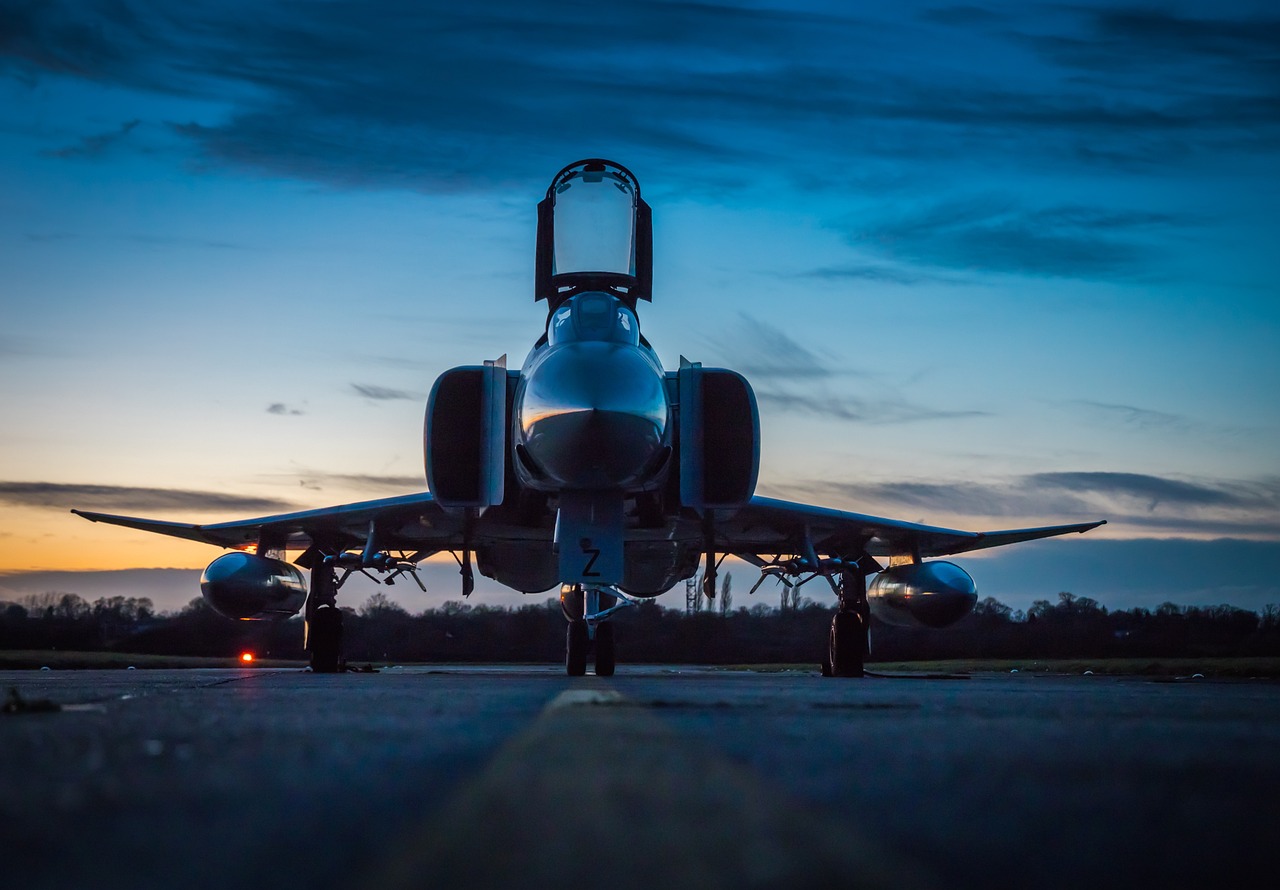
The Evolution of AI in Military Operations
Artificial Intelligence (AI) has come a long way since its inception, and its journey in military operations is nothing short of fascinating. From the early days of simple algorithms to today's sophisticated machine learning models, AI has increasingly become a vital component in military strategy and operations. In the past, military decision-making relied heavily on human intuition and experience, but as technology has evolved, so too has the approach to warfare.
To understand the evolution of AI in military contexts, we can identify several key milestones that have shaped its development:
- 1950s-1960s: The concept of AI was born, with early experiments in computing and algorithms aimed at problem-solving.
- 1980s: The introduction of expert systems allowed military planners to simulate various scenarios and make informed decisions based on data.
- 2000s: The rise of big data analytics paved the way for more advanced AI applications, enabling the military to process vast amounts of information quickly.
- 2010s: Machine learning and deep learning technologies began to emerge, allowing for real-time data processing and predictive analytics.
- Present Day: AI is now integrated into various military systems, from drones to command and control systems, enhancing operational efficiency and decision-making capabilities.
This evolution signifies a shift not only in technology but also in mindset. Military leaders are increasingly recognizing the potential of AI to augment human capabilities rather than replace them. For instance, AI can analyze data at lightning speed, providing insights that would take humans significantly longer to uncover. This capability allows for more informed decision-making during critical moments, which can be the difference between success and failure in military operations.
Moreover, AI's role extends beyond just data analysis. It is now being utilized in various operational aspects, including logistics, training simulations, and even predictive maintenance of equipment. This multifaceted approach enhances overall military readiness and effectiveness. As we look to the future, the integration of AI in military operations will undoubtedly continue to evolve, presenting both opportunities and challenges that will need to be addressed.
In summary, the evolution of AI in military operations highlights a remarkable journey from rudimentary algorithms to complex systems that are reshaping how militaries operate. As AI technology advances, its implications for military strategy and crisis management will only grow, making it an essential area of focus for military leaders worldwide.
- What are the primary benefits of AI in military operations?
AI enhances decision-making, improves operational efficiency, and provides predictive analytics that can foresee potential threats. - How does AI impact military training?
AI-driven simulations can create realistic training environments, allowing personnel to practice and refine their skills in a safe setting. - Are there ethical concerns regarding AI in the military?
Yes, issues such as accountability, bias, and the potential for autonomous weapons systems raise significant ethical questions that need to be addressed.

AI-Driven Decision Making
In the fast-paced world of military operations, the ability to make quick and informed decisions can mean the difference between success and failure. This is where artificial intelligence (AI) steps in, acting as a powerful ally for military leaders. Imagine having a supercharged assistant that can sift through mountains of data in seconds, pinpointing critical information that might otherwise go unnoticed. With AI-driven decision-making, military personnel can leverage advanced algorithms to analyze vast datasets, providing actionable insights that enhance situational awareness and operational effectiveness.
One of the most remarkable aspects of AI in military contexts is its ability to process intelligence data. Traditional methods of gathering and analyzing intelligence can be time-consuming and prone to human error. However, AI can automate these processes, leading to faster and more accurate assessments. For instance, AI systems can analyze satellite imagery, intercept communications, and even monitor social media feeds to detect emerging threats. This capability not only improves situational awareness but also enables military leaders to respond swiftly to dynamic scenarios on the battlefield.
Moreover, the integration of AI in decision-making extends to real-time data processing. Imagine a battlefield where information is constantly changing—troop movements, weather conditions, and enemy activity are all in flux. AI can analyze real-time data feeds from various sources, allowing commanders to adapt their strategies on the fly. This is akin to having a real-time map that updates automatically, showing the most current information at any given moment. Such capabilities empower military leaders to make more informed choices, ultimately enhancing mission success.
Another exciting aspect of AI-driven decision-making is the use of predictive analytics. By applying machine learning techniques to historical data, AI can identify patterns and forecast potential threats. This predictive capability allows military planners to prepare for various scenarios, ensuring that they are not just reacting to events but proactively strategizing for the future. For example, if an AI system detects an uptick in hostile communications in a specific region, military leaders can allocate resources or adjust strategies accordingly to mitigate risks.
In summary, AI-driven decision-making represents a significant leap forward for military operations. By harnessing the power of AI to analyze data, enhance situational awareness, and predict future threats, military leaders are better equipped to navigate the complexities of modern warfare. As we continue to explore the integration of AI into military frameworks, it’s clear that the future of decision-making will be more data-driven, efficient, and responsive than ever before.
- How does AI improve decision-making in military operations?
AI enhances decision-making by analyzing large volumes of data quickly, providing insights that help military leaders make informed choices. - What role does predictive analytics play in military strategy?
Predictive analytics helps forecast potential threats by identifying patterns in historical data, allowing military planners to prepare and strategize effectively. - Can AI fully replace human decision-making in the military?
While AI can assist and enhance decision-making, human oversight remains crucial to ensure accountability and ethical considerations are addressed. - What are the ethical implications of using AI in military decision-making?
Ethical concerns include accountability for decisions made by AI systems, potential biases in algorithms, and the implications of autonomous weapons.

Data Analysis and Intelligence Gathering
In the fast-paced world of military operations, the ability to gather and analyze data efficiently can be the difference between success and failure. Artificial Intelligence (AI) has emerged as a game-changer in this arena, transforming how military organizations collect intelligence and make decisions. Imagine having access to a supercharged analytical brain that can sift through mountains of data in mere seconds—this is what AI brings to the table. By leveraging advanced algorithms, AI systems can process vast amounts of information from various sources, including satellite imagery, social media, and reconnaissance reports, to provide a comprehensive view of the battlefield.
One of the remarkable features of AI in data analysis is its ability to enhance situational awareness. Traditional methods of intelligence gathering often leave gaps due to human limitations—after all, no one can process thousands of data points simultaneously without fatigue. AI, on the other hand, can analyze real-time data feeds, identifying patterns and anomalies that might go unnoticed by human analysts. This capability allows military leaders to respond swiftly to emerging threats and adapt their strategies accordingly.
Moreover, AI-driven systems can automate the tedious aspects of data gathering, allowing military personnel to focus on strategic planning and decision-making. For instance, AI can automatically filter out irrelevant information, prioritize critical data, and even provide actionable insights based on the analysis. This not only saves time but also enhances the accuracy of intelligence reports. Consider a scenario where a military unit is monitoring a potential conflict zone. With AI, they can quickly assess the situation by analyzing:
- Movement patterns of troops
- Communication intercepts
- Environmental changes
These insights equip commanders with the knowledge they need to make informed decisions, whether that means deploying additional resources or altering operational tactics. The speed and efficiency of AI in data analysis are proving to be invaluable assets in military crisis management.
Furthermore, the integration of AI with other technologies, such as drone surveillance and sensor networks, amplifies its effectiveness. Drones equipped with AI can autonomously gather intelligence over vast areas, relaying critical information back to command centers in real-time. This synergy between AI and other technological advancements not only improves data collection but also enhances the overall operational effectiveness of military forces.
As we look to the future, the role of AI in data analysis and intelligence gathering is poised to grow even more significant. The potential for AI to predict outcomes based on historical data and current trends opens up new avenues for strategic planning and crisis management. However, with these advancements come challenges, such as ensuring the accuracy of AI algorithms and addressing ethical considerations surrounding their use.
- How does AI improve situational awareness in military operations?
AI processes large volumes of data quickly, identifying patterns and anomalies that enhance understanding of the battlefield. - What types of data can AI analyze for military intelligence?
AI can analyze various data sources, including satellite imagery, social media, reconnaissance reports, and real-time sensor data. - Can AI predict future threats based on current data?
Yes, AI uses predictive analytics to forecast potential threats, allowing military planners to prepare accordingly. - What are the ethical concerns related to AI in military intelligence?
Concerns include accountability for autonomous decisions, potential biases in AI algorithms, and the implications of using AI in combat scenarios.
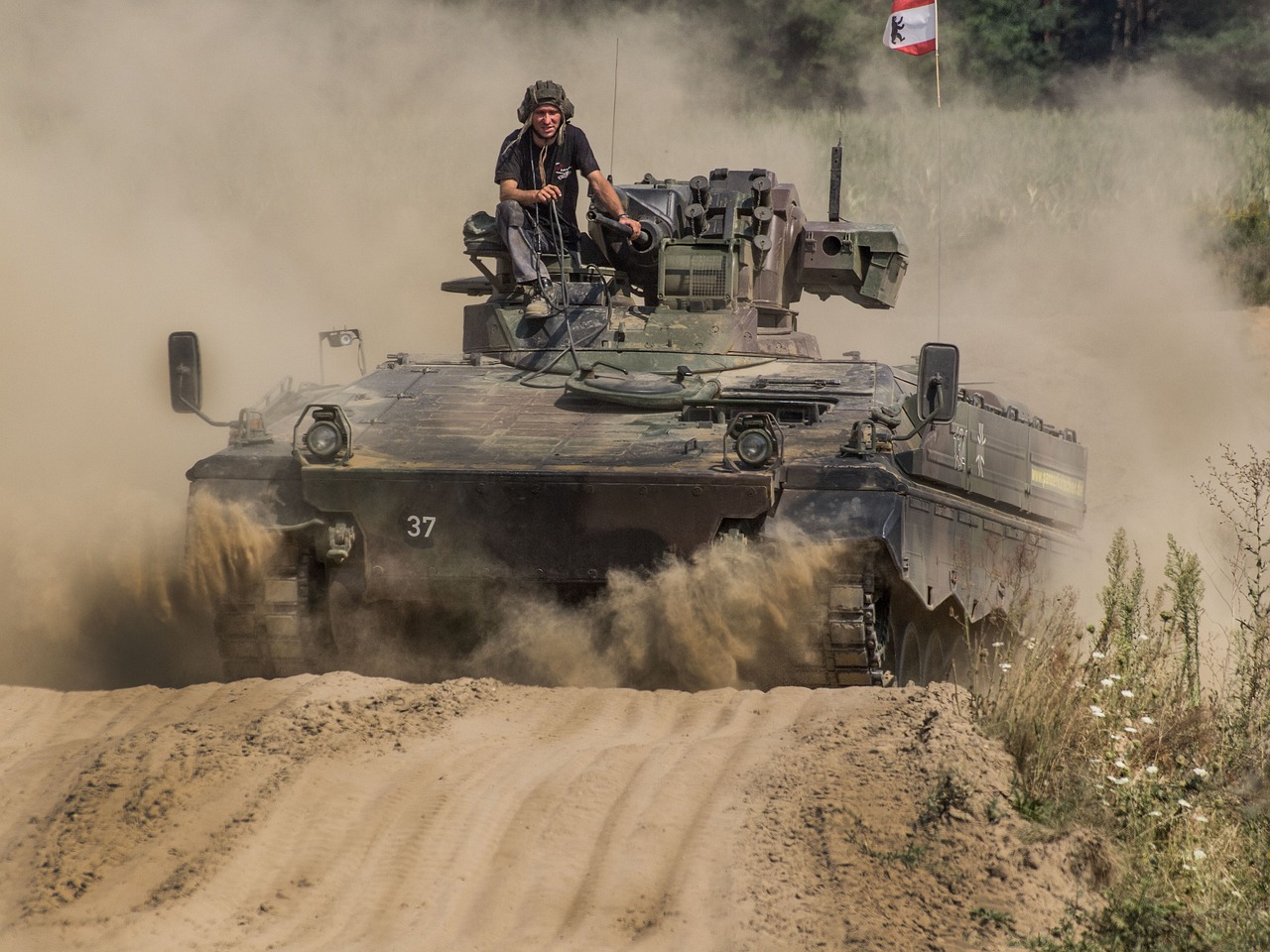
Real-Time Data Processing
In the fast-paced world of military operations, the ability to process data in real-time is nothing short of revolutionary. Imagine being on the battlefield where every second counts; decisions made in the blink of an eye can mean the difference between victory and defeat. This is where comes into play, enhancing situational awareness and operational effectiveness like never before. With the integration of artificial intelligence, military forces now have the capability to analyze vast streams of data as it arrives, transforming raw information into actionable intelligence.
AI algorithms are designed to sift through enormous datasets, including satellite imagery, drone feeds, and sensor outputs, to identify patterns and anomalies that human analysts might overlook. This technology allows commanders to gain insights into enemy movements, predict potential threats, and make informed decisions almost instantaneously. For instance, when a reconnaissance drone captures footage of enemy troop formations, AI can analyze this data in real-time, providing military leaders with updates on troop strength, positioning, and potential vulnerabilities.
Moreover, the integration of real-time data processing is not limited to just battlefield scenarios. It extends to logistics, maintenance, and even personnel management. By leveraging AI, military organizations can optimize supply chains, predict equipment failures before they happen, and ensure that troops are adequately supported during operations. This holistic approach to data processing creates a more agile and responsive military force.
To illustrate the impact of real-time data processing, consider the following table that summarizes key benefits:
| Benefit | Description |
|---|---|
| Enhanced Decision-Making | AI provides timely insights that help commanders make informed choices quickly. |
| Improved Situational Awareness | Real-time data processing allows for a comprehensive understanding of the battlefield. |
| Increased Operational Efficiency | Streamlined processes reduce delays and enhance mission effectiveness. |
| Predictive Capabilities | AI can forecast potential scenarios, allowing for proactive measures. |
In conclusion, the advent of real-time data processing powered by AI is a game changer in military crisis management. It not only allows for rapid analysis and response but also fosters a culture of informed decision-making that is essential in high-stakes environments. As technology continues to evolve, the military's reliance on these systems will only deepen, paving the way for a future where data-driven strategies dominate the battlefield.
- What is real-time data processing in military operations?
Real-time data processing refers to the immediate analysis of data as it is generated, allowing military leaders to make swift and informed decisions based on current information. - How does AI enhance real-time data processing?
AI enhances real-time data processing by quickly analyzing large volumes of data from various sources, identifying patterns, and providing actionable insights to military personnel. - What are some applications of real-time data processing in the military?
Applications include battlefield surveillance, logistics management, equipment maintenance, and personnel tracking, all of which benefit from timely data analysis. - Are there any risks associated with real-time data processing?
Yes, there are risks such as data overload, potential inaccuracies in AI analysis, and the need for constant updates to algorithms to ensure reliability and effectiveness.

Predictive Analytics
In the ever-evolving landscape of military operations, stands out as a game-changer. Imagine having the ability to foresee potential threats before they even materialize! This isn't just wishful thinking; it's the power of artificial intelligence at work. By leveraging vast amounts of data, AI-driven predictive analytics can analyze patterns and trends, allowing military planners to anticipate crises and respond proactively.
At its core, predictive analytics involves using historical data and advanced algorithms to forecast future events. For military strategists, this means being equipped with insights that can significantly enhance operational readiness. Consider the following scenarios where predictive analytics can prove invaluable:
- Threat Assessment: AI can analyze data from various sources, including satellite imagery, social media, and communication intercepts, to identify emerging threats in real-time.
- Resource Allocation: By predicting where conflicts are likely to arise, military leaders can allocate resources more efficiently, ensuring that troops and equipment are positioned strategically.
- Logistical Planning: Anticipating the need for supplies and reinforcements can streamline logistics, reducing delays and enhancing operational effectiveness.
One of the most striking aspects of predictive analytics is its ability to incorporate machine learning. As AI systems process more data, they become increasingly adept at recognizing patterns and making accurate predictions. This continuous learning process not only improves the reliability of forecasts but also enables military leaders to adapt their strategies based on the latest intelligence.
Moreover, predictive analytics can significantly reduce the time required for decision-making. In high-stakes environments where every second counts, having access to predictive insights allows commanders to make informed choices swiftly. Imagine a scenario where a military unit is faced with a rapidly evolving threat; the ability to predict the adversary's next move can mean the difference between success and failure.
However, it's important to note that predictive analytics is not without its challenges. The reliance on data means that the quality and accuracy of the information being analyzed are crucial. Inaccurate data can lead to misguided predictions, potentially putting military operations at risk. Therefore, ensuring data integrity and implementing robust validation processes is vital for the effectiveness of predictive analytics in military contexts.
As we look to the future, the integration of into military crisis management will only deepen. With advancements in AI technology, we can expect even more sophisticated predictive models that can account for a wider array of variables. This evolution will undoubtedly enhance the military's ability to navigate complex environments, ensuring that they remain one step ahead of potential threats.
- What is predictive analytics? Predictive analytics is a branch of advanced analytics that uses historical data, machine learning, and algorithms to forecast future outcomes.
- How does AI improve predictive analytics in military operations? AI enhances predictive analytics by processing large volumes of data quickly, identifying patterns, and making accurate predictions that inform military strategies.
- What are the risks associated with predictive analytics? Risks include reliance on inaccurate data, which can lead to misguided predictions, and the ethical implications of automated decision-making.

Operational Efficiency through Automation
In the fast-paced world of military operations, the need for operational efficiency is more crucial than ever. With the advent of artificial intelligence (AI), the military is witnessing a significant transformation in how routine tasks are handled. Imagine a scenario where soldiers can focus on strategic planning and critical decision-making while AI systems take care of repetitive and time-consuming tasks. This is not just a dream; it’s becoming a reality. By automating various military operations, AI is not only enhancing efficiency but also ensuring that human resources are utilized where they are needed most.
One of the most remarkable aspects of AI-driven automation is its ability to process vast amounts of data quickly and accurately. For example, consider logistical operations—supply chain management, troop movements, and equipment maintenance. Traditionally, these tasks required extensive human oversight and were prone to errors. However, with AI, the military can automate inventory management, predict supply shortages, and optimize routes for troop movements. This level of precision means that resources are allocated more effectively, reducing waste and ensuring that personnel have what they need when they need it.
Moreover, AI can enhance operational efficiency in training and simulation environments. Advanced AI systems can create realistic training scenarios that adapt in real-time to the actions of the trainees. This not only makes training more effective but also allows military personnel to engage in high-stakes decision-making without the risks associated with live exercises. For instance, simulation-based training powered by AI can replicate complex battle scenarios, enabling soldiers to practice their responses in a controlled environment. This leads to better preparedness when they face real-world situations.
Furthermore, the integration of AI into military operations can lead to significant cost savings. By automating routine tasks, the military can reduce the number of personnel required for specific operations, allowing for a reallocation of those resources to areas that require human expertise. This is particularly important in times of budget constraints, where maximizing the effectiveness of every dollar spent is essential. The table below illustrates the potential cost savings associated with AI-driven automation in various military functions:
| Military Function | Traditional Cost | AI-Enhanced Cost | Potential Savings |
|---|---|---|---|
| Logistics Management | $1,000,000 | $700,000 | $300,000 |
| Training Simulations | $500,000 | $350,000 | $150,000 |
| Maintenance Operations | $800,000 | $500,000 | $300,000 |
As we look to the future, it's clear that the role of AI in enhancing operational efficiency through automation will only grow. The military's ability to adapt to new technologies will determine its success in complex environments. By embracing AI, military leaders can ensure that their forces are not only effective but also agile and ready to respond to any challenge that arises.
- How does AI improve logistical operations in the military? AI streamlines logistical tasks by automating inventory management and predicting supply shortages, leading to more efficient resource allocation.
- What are the benefits of AI in military training? AI creates realistic training scenarios that adapt to trainee actions, enhancing preparedness without the risks of live exercises.
- Can AI reduce military costs? Yes, by automating routine tasks, AI can lower operational costs and allow for the reallocation of resources to critical areas.
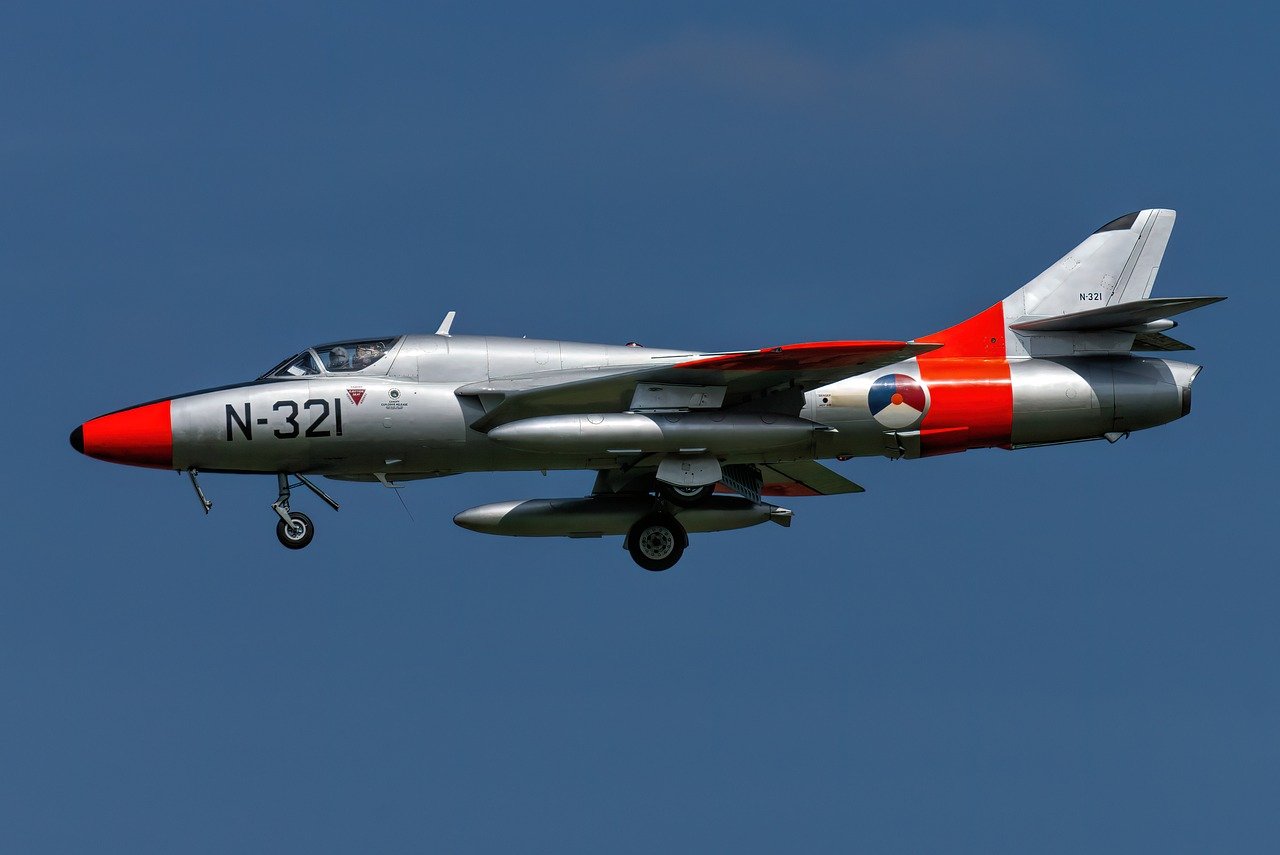
Ethical Considerations in AI Deployment
The integration of artificial intelligence in military operations brings forth a myriad of ethical considerations that cannot be overlooked. As we embrace these advanced technologies, it becomes crucial to examine the implications of their deployment in high-stakes environments. The military's reliance on AI raises pressing questions about accountability, bias, and the potential for the emergence of autonomous weapons systems. How do we ensure that these powerful tools enhance our operations without compromising our moral and ethical standards?
One of the foremost concerns is the issue of accountability and responsibility. When AI systems are tasked with making autonomous decisions, especially in combat scenarios, the lines of accountability can blur. Imagine a situation where an AI-controlled drone makes a decision that leads to unintended casualties. Who is responsible for that decision? Is it the programmer, the military leader who deployed the system, or the machine itself? These questions highlight the need for clear guidelines and frameworks that delineate responsibility when AI systems act independently.
Furthermore, the risk of bias and fairness in AI systems is another significant ethical consideration. AI algorithms are only as good as the data they are trained on. If the data reflects historical biases, the AI may inadvertently perpetuate these biases in its decision-making processes. For instance, if an AI system is trained on data that historically favors certain demographics over others, it may lead to unfair treatment in operational decisions. This raises the critical need for transparency in how AI systems are developed and trained, ensuring that fairness is a cornerstone of military applications.
To address these ethical dilemmas, the military must adopt a proactive approach. This includes implementing rigorous ethical standards for AI deployment, conducting regular audits of AI systems, and fostering an environment of accountability. As we move forward, it is essential to engage in continuous dialogue about the ethical implications of AI, involving not just military leaders but also ethicists, technologists, and the public. This collaborative approach can help us navigate the complex landscape of AI in military operations responsibly.
- What are the main ethical concerns regarding AI in military operations?
Key concerns include accountability, bias in AI algorithms, and the potential consequences of deploying autonomous weapons systems. - How can accountability be ensured in AI decision-making?
Establishing clear guidelines and frameworks that define responsibility is crucial when AI systems make autonomous decisions. - What steps can be taken to mitigate bias in AI systems?
Regular audits, diverse training data, and transparency in AI development can help minimize bias and ensure fairness. - Is there a risk of AI systems making unethical decisions?
Yes, without proper oversight and ethical standards, AI systems may make decisions that conflict with established moral principles.

Accountability and Responsibility
The introduction of artificial intelligence (AI) into military operations has sparked a heated debate regarding . As we increasingly rely on AI systems to make critical decisions in high-stakes environments, the question arises: who is responsible when things go awry? This dilemma is not just a theoretical exercise; it's a pressing concern for military leaders, policymakers, and ethicists alike. The crux of the matter lies in the autonomy granted to AI systems and the implications of that autonomy on human oversight.
When AI systems operate independently, they can make decisions faster than humans can react. This speed can be a double-edged sword. On one hand, it allows for rapid responses to emerging threats, which can be crucial in life-or-death situations. On the other hand, it raises significant questions about who is to blame if an AI system misjudges a situation and causes unintended harm. Is it the programmer who designed the algorithm? The military personnel who deployed the system? Or the AI itself? This ambiguity can create a moral and legal quagmire that complicates accountability.
To better understand this issue, consider the following aspects:
- Human Oversight: Military protocols must ensure that AI systems are not left to operate in a vacuum. Human oversight is crucial in making final decisions, especially in complex scenarios where ethical considerations come into play.
- Clear Guidelines: Establishing clear guidelines and protocols for AI deployment can help delineate responsibility. This includes defining the roles of human operators and the limits of AI autonomy.
- Legal Frameworks: As AI technology evolves, so too must our legal frameworks. New laws may be necessary to address the unique challenges posed by autonomous systems, ensuring that accountability is not just an afterthought.
Moreover, the concept of responsibility extends beyond mere accountability. It encompasses the ethical obligation to ensure that AI systems are designed and implemented in ways that prioritize human safety and dignity. This means rigorous testing, validation, and ongoing monitoring of AI systems to prevent biases and errors that could lead to catastrophic outcomes.
In conclusion, as military organizations embrace AI technologies, they must grapple with the complex issues of accountability and responsibility. The path forward requires a delicate balance between harnessing the power of AI and maintaining human oversight to ensure ethical and responsible use. Without this balance, we risk creating systems that operate beyond our control, leading to consequences that could be devastating. The future of military operations may hinge on how effectively we address these challenges today.
- What are the main concerns regarding AI accountability in military operations?
The primary concerns include determining who is responsible for decisions made by AI systems, the potential for misjudgment in critical situations, and the need for human oversight to ensure ethical considerations are met.
- How can military organizations ensure AI systems are used responsibly?
By establishing clear guidelines, maintaining human oversight, and developing legal frameworks that address the unique challenges posed by AI technologies.
- What role does human oversight play in AI decision-making?
Human oversight is crucial for ensuring that AI systems operate within ethical boundaries and that final decisions are made by qualified personnel, especially in complex and sensitive situations.

Bias and Fairness in AI Systems
As we dive deeper into the realm of artificial intelligence, one of the most pressing concerns that arise is the issue of bias and fairness in AI systems. Imagine a world where decisions that affect lives—like military strategies or resource allocations—are made by algorithms that are not only flawed but also inherently biased. This is not just a hypothetical scenario; it's a reality we must confront as we integrate AI into military operations. The algorithms that drive these systems are often trained on historical data, which can carry forward the biases of the past. Consequently, if the data reflects societal biases, the AI systems may perpetuate these inequalities, leading to unfair outcomes.
So, what exactly does bias look like in AI? It can manifest in various ways, such as through skewed data sets or flawed assumptions made during the design phase. For instance, if an AI system is primarily trained on data from a specific demographic, it may struggle to make accurate predictions or decisions for individuals outside of that group. This can create a dangerous cycle where certain groups are either overrepresented or underrepresented in military decisions, potentially leading to inequitable treatment in crisis management scenarios. The implications are profound, impacting not just military effectiveness but also the ethical standing of armed forces globally.
To mitigate bias, it is essential to prioritize fairness and transparency in AI systems. This involves a multi-faceted approach, including:
- Diverse Data Sets: Ensuring that the data used to train AI systems is representative of various demographics and scenarios.
- Regular Audits: Conducting periodic assessments of AI algorithms to identify and rectify biases.
- Inclusive Design Teams: Involving a diverse range of voices in the development of AI technologies to provide broader perspectives.
Moreover, accountability is paramount. When AI systems make decisions, it is crucial to have a clear understanding of who is responsible for those decisions. This raises complex ethical questions: If an AI system makes a biased decision, who is to blame? The developers, the military leadership, or the system itself? Establishing clear lines of accountability can help ensure that AI is used responsibly and ethically in military operations.
In conclusion, addressing bias and fairness in AI systems is not just a technical challenge; it's a moral imperative. As military organizations around the world increasingly rely on AI for crisis management, they must remain vigilant about the potential for bias to influence critical decisions. By fostering transparency and inclusivity in AI development, we can work towards a future where these powerful technologies enhance military effectiveness while also upholding the principles of fairness and justice.
- What is bias in AI systems? Bias in AI systems refers to the tendency of algorithms to produce unfair outcomes due to flawed data or design, often reflecting societal prejudices.
- How can bias in AI be mitigated? Bias can be mitigated through diverse data sets, regular audits, and inclusive design teams that consider various perspectives.
- Why is accountability important in AI? Accountability is crucial to ensure responsible use of AI, particularly when decisions made by AI systems have significant consequences.
- What role does fairness play in military AI applications? Fairness in military AI applications ensures that decisions do not disproportionately affect certain groups, maintaining ethical standards in operations.

The Future of AI in Military Crisis Management
The landscape of military crisis management is on the brink of a revolutionary transformation, thanks to the rapid advancements in artificial intelligence. As we look towards the future, it’s essential to recognize that AI is not just a tool; it’s becoming a strategic partner in decision-making processes. Imagine a world where military leaders can predict potential crises before they escalate, allowing for preemptive actions that save lives and resources. This is not science fiction; it’s the future of military operations.
One of the most exciting prospects is the integration of machine learning algorithms that can analyze vast amounts of data from various sources in real-time. This capability will enable military personnel to gain insights that were previously unimaginable. For instance, AI can sift through satellite imagery, social media feeds, and intelligence reports, identifying patterns and anomalies that could signal an impending threat. The efficiency of AI in processing and interpreting this data will significantly enhance situational awareness, allowing for quicker and more informed responses.
Moreover, as AI technologies continue to evolve, we can expect to see advancements in predictive analytics. Imagine being able to forecast not just immediate threats but also long-term geopolitical shifts. Military planners could use AI to simulate various scenarios, testing the outcomes of different strategies before implementing them in real life. This level of foresight could change the game entirely, making military operations more strategic and less reactive.
However, with great power comes great responsibility. The future of AI in military crisis management also raises significant ethical questions. As we become more reliant on automated systems, we must grapple with issues of accountability. If an AI system makes a decision that leads to unintended consequences, who is responsible? This question is pivotal as we move forward, and it demands serious consideration from military leaders and policymakers alike.
Furthermore, the potential for autonomous weapons systems raises concerns about the ethical implications of allowing machines to make life-and-death decisions. As these technologies develop, there must be stringent regulations and oversight to ensure that human judgment remains at the forefront of military operations. The future must balance the benefits of AI with the ethical responsibilities that come with its deployment.
In conclusion, the future of AI in military crisis management is bright yet complex. As we embrace these technologies, we must remain vigilant about the ethical implications and strive for a future where AI enhances human capabilities without compromising our moral obligations. The synergy between AI and military operations could lead to unprecedented levels of efficiency and effectiveness, ultimately shaping a safer world.
- What role does AI currently play in military operations?
AI is used for data analysis, decision-making support, and operational efficiency, helping military leaders respond to crises more effectively. - What are the biggest challenges of integrating AI into military crisis management?
Challenges include ethical considerations, accountability for autonomous decisions, and the potential for bias in AI algorithms. - How can predictive analytics improve military strategies?
Predictive analytics can forecast potential threats and simulate various scenarios, allowing for better strategic planning and preparedness. - What ethical concerns arise from the use of AI in military settings?
Concerns include accountability for decisions made by AI systems, the risk of bias, and the implications of autonomous weapons systems.
Frequently Asked Questions
- What is the role of AI in military crisis management?
AI plays a crucial role in military crisis management by enhancing decision-making processes, improving operational efficiency, and providing strategic planning capabilities. It helps military leaders analyze vast amounts of data quickly and accurately, enabling them to respond effectively to complex situations.
- How has AI evolved in military operations over the years?
The evolution of AI in military operations has been significant, with key milestones marking its journey. From early computational models to advanced machine learning algorithms, the reliance on intelligent systems has increased, transforming how military operations are conducted and managed.
- Can AI really improve decision-making in crisis situations?
Absolutely! AI algorithms can analyze data sets and provide actionable insights that help military leaders make informed decisions during crises. By processing information faster than humans, AI can identify patterns and predict outcomes, which is invaluable in high-pressure scenarios.
- What are the benefits of real-time data processing in military operations?
Real-time data processing allows military units to respond swiftly to dynamic situations on the battlefield. By analyzing live data feeds, AI can enhance situational awareness, ensuring that commanders have the most current information to make critical decisions.
- What is predictive analytics, and how does it help the military?
Predictive analytics involves using AI to forecast potential threats by analyzing historical and real-time data. This capability allows military planners to anticipate challenges and prepare strategies proactively, which can be a game-changer in crisis management.
- How does AI contribute to operational efficiency?
AI contributes to operational efficiency by automating routine tasks, which frees up personnel to focus on more complex and strategic decision-making. This not only enhances productivity but also allows for better resource allocation during critical missions.
- What ethical considerations arise from using AI in military operations?
There are several ethical considerations, including accountability for decisions made by autonomous systems, potential biases in AI algorithms, and the implications of deploying autonomous weapons. It's essential to address these issues to ensure responsible AI use in military contexts.
- How is accountability determined when AI systems make decisions?
Determining accountability can be challenging when AI systems operate autonomously. Discussions around this topic focus on establishing clear guidelines and frameworks to assign responsibility, especially in high-stakes military scenarios where decisions can have significant consequences.
- What risks are associated with bias in AI systems?
Bias in AI systems can lead to unfair outcomes and potentially harmful decisions. It's crucial to ensure that AI algorithms are transparent, fair, and regularly audited to mitigate risks and promote trust in military applications.
- What does the future hold for AI in military crisis management?
The future of AI in military crisis management looks promising, with ongoing advancements in technology. However, challenges such as ethical concerns, technological limitations, and the need for robust regulations will need to be addressed to harness AI's full potential effectively.








